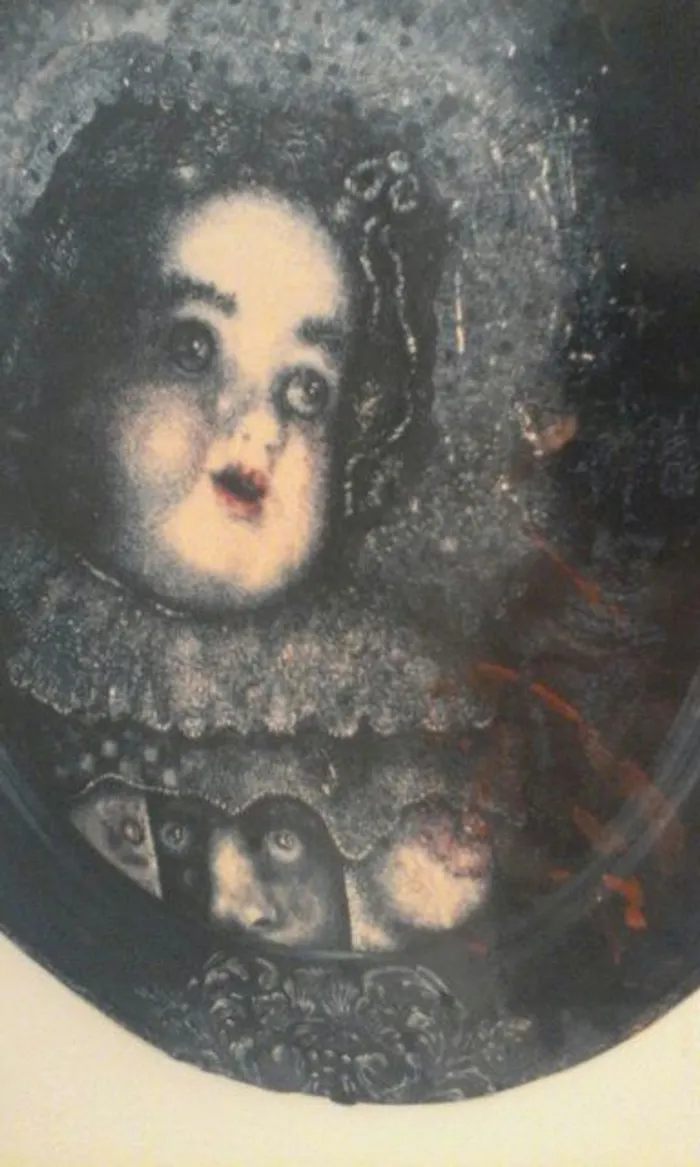Silke's art: A soap opera of human emotion

HUMOROUS CURIOSITY: Work by Eris Silke. HUMOROUS CURIOSITY: Work by Eris Silke.
Surface and depth, positive and negative, sane and insane, conscious and unconscious – such are some of the apparently contradictory binaries that pervade the work of artist Eris Silke. Boasting several exhibitions and housed variously privately, the unmistakable style of Eris Silke, a professional artist for a number of decades, continues to create canvases of unmistakable charm, esoteric depth and, one might say, humorous curiosity.
In conversation with the artist, she pinpoints the major turnabout in painting with the advent of the photograph. While the Renaissance period heralded the beginnings of, for want of a better word, a certain realism, this new technology would apparently overtake paintings' call to render the observable world. Yet on the other hand, she does not lament this, for with it, the artist was encouraged or pushed to find new creative solutions.
Surrealism and a plethora of art movements characterises earlier 20th century art and painting. Her canvases could be described as surreal. But she takes this further: a dot like alternation between black and white, the scant inclusion of colour and the use of visual distortion particularly concerning the portraits that inspire her, combine to create faces that are on the verge of madness. She speaks of the will of the unconscious, what one might call the id that underlies conscious processes.
It is questionable whether her archaic figures find a balance between conscious and unconscious experience and choice. Teetering on the borderline of insanity, of insatiable lust and uncontrollable urges set in a theatrical, almost Victorian setting. Draped figures, masked faces – it is uncertain whether the characters shall survive the collective will for destruction and the abyss. Yet the artist is positive that the ego and the instinct shall find some sort of harmony and balance.
There is often the co-existence of a feminine beauty and masculine strength, the possibility of true communication rather than concealment, mystique and deception.
Silke’s interest in psychology (and formal background in the said discipline) comes through in her work as she appears to inspect the individuals in her paintings for a deep-rooted cause for behaviour. Her alternating sequence of black and white – almost dot-like – suggests that such images are the product precisely of a combination of dark and light, of momentary glimpses of reality and pleasure as well as a depressed lethargy.
When looking at her canvases one may feel a dance-like charm as if one is caught in theatrical movement - the soap-opera of human relations if you will. There is a light that exudes from the work, more overt considering here use of various glazes. Silke works patiently and methodically on her paintings, a disciplined approach and conducive to sort of retreat from the world.
Here figures are often voluptuous and sensual; at other times, rather distorted and forlorn. Some exhibit an uncanny innocence; yet at other times they appear sunk into a murky world of violence and incoherence. Such contrasts typify her style with its alternating light and dark – a dualism that mirrors the fact that an object can only be if it has space. And the relationship between her “objects” in space are at once impossible and imaginatively alive, at once aloof and at other times teeming with the desire to connect and belong.
There is a narrative aspect to her painting and Silke often sites classical literature as an important influence in her work. In an African context, one may surmise that her work speaks of both the poverty and potential wealth of a continent that is the progenitor of civilisation, namely Ancient Egypt. Here we are not bound by the dark sceptre of Ra, but elevated to the surreal landscape of the mind – and feelings.
For insofar as one can get lost in her paintings, one finds a human accord unencumbered by inventions of a meta-reality and a dictator-like hierarchy of gods and demigods. For here all we must go on are the props, plots and characters of this stage – the play of real human love and desire.
It is not always pretty and changes over time, it is masked and veiled, it escapes cognitive resolution or a conclusion – but it is at least a call to see beyond the cosmetic surface, to create one’s own reality and then communicate that to others.